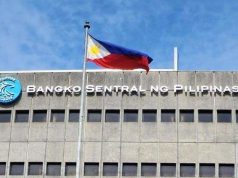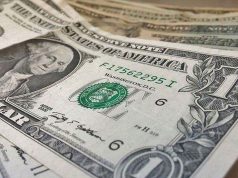MANILA – S&P Global Ratings sees five rate hikes from the Bangko Sentral ng Pilipinas (BSP) over the next two years in the face of the Federal Reserve’s own continued tightening and against the backdrop of robust Philippine domestic economic activity.
“We expect a tightening bias from Bangko Sentral ng Pilipinas, especially if markets continue to take Fed rate hikes in stride,” S&P said in the December report it released last week.
The debt watcher expects the central bank to raise interest rates three times in 2018 and twice in 2019 in increments of 25 basis points, according to its latest economic outlook.
Hence, S&P sees the BSP’s policy at 4.25% by end-December 2019, compared to the current 3.0% benchmark borrowing rate.
The US Federal Reserve itself raised interest rates for a third time this year during the Dec. 12-13 review of its Federal Open Markets Committee, and held on to plans for three more rate hikes over the next two years. US benchmark rates are now 1.25-1.5%.
The BSP kept its policy stance unchanged during the Dec. 14 meeting of its Monetary Board as domestic inflation remains within target and economic growth prospects upbeat. Central bank officials have said that they do not have to match the Fed’s tightening moves as they come.
The Fed hike did not cause a substantial reaction among financial markets, with analysts saying that the fresh “lift-off” had long been priced in by investors. The peso even edged slightly stronger versus the dollar after the rate hike, with its impact offset by enactment of the first of up to five planned tax reform packages.
The BSP last hiked key rates in September 2014, although procedural cuts were introduced in June 2016 for the shift to an interest rate corridor scheme.
BSP Deputy Governor Diwa C. Guinigundo has said that there’s “hardly any need” to adjust policy settings given current growth and inflation dynamics.
S&P last month raised Philippine growth forecast to 6.6% for 2017 from 6.4% previously, taking into account the faster-than-expected 6.9% pace during the third quarter.
A “region-wide” boom in electronics exports supported the faster gross domestic product growth despite an easing in domestic household spending, S&P said.
If realized, economic growth will settle within the 6.5-7.5% goal set for the entire year by economic managers of President Rodrigo R. Duterte.
The credit rater also expects the country’s current account — which measures the international trade flows of goods and services — to revert to a small deficit, but will remain at a manageable level.
It shared assessments by other economists that the deficit should not by itself cause alarm since it was fueled largely by increasing imports that, in turn, are prompted by business expansion plans and the government’s ambitious infrastructure development drive.
MORE VULNERABLE
“Though we do not foresee the deficit widening significantly to an unsustainable level, any widening implies that external shocks would have a bigger potential of causing sudden capital outflows,” S&P said.
“Possible sources of such a shock would be an escalation of geopolitical tensions, trade issues, or market turbulence coming from surprises in the pace of Fed normalization.”
As of its latest review, the BSP expected the current account to settle at a $100-million deficit this year. Exports are now seen growing by 11% this year, roughly matching a 10% increase in imports.
In 2018, the current account deficit is expected to widen even further to $700 million — still “manageable” as far as the central bank is concerned.








